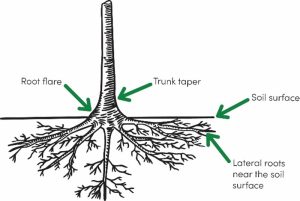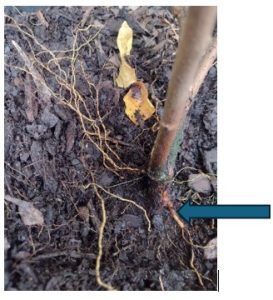
Virginia Cooperative Extension – Hanover Unit is home to our Master Gardener Help Desk. Volunteers answer your gardening questions, whether it be about vegetables, turf, weeds, ornamentals, trees and shrubs, insect damage, plant disease…you name it.
We provide only research-based information, and we discuss this information with the homeowner.
We welcome your questions.

- by phone at 804-752-4306
- email to [email protected]
- or you can visit our Help Desk Cooperative Extension, 13015 Taylor Complex Lane, Ashland, VA 23005
The Help Desk is open Monday-Friday, 9:00 am – 4:00 pm.
It is staffed by volunteers. We may not be available every afternoon. Before visiting the office, please call ahead (804-752-4310) to ensure that someone is there to help you. However, we will answer all queries promptly. We are closed on Hanover County holidays. Please give us a call, send an email, visit us with a sample of your problem plant…we are here to help you answer your gardening questions.
The Help Desk Team
FALL IS FOR PLANTING – BUT NOT TOO DEEP!
Fall is a perfect time to plant trees and shrubs (sometimes called “woodies”). Roots help the plant grow by taking in water and nutrients, but they also need oxygen. However, oxygen cannot penetrate the soil very far. By finding the root flare and placing it a little above the surface of the soil when planting, you ensure the correct root depth.

(diagram, Royal Botanical Garden).
Many woodies are grown in containers; the root flare is often buried several inches below the soil surface. Remove the plant from the container and dig down carefully to locate the root flare, removing all the soil that covers it. As you do this, you may encounter many small roots coming off the buried trunk. Those are not the root flare and should be removed. Once the root flare is located, place the root ball in the hole so that the root flare is at or slightly above ground level.

(Photo, arrow highlights root flare of a shrub, VMKish photo credit).
Leave the root flare exposed when you backfill with soil. Watering is critical as this will permit the roots to expand laterally into the surrounding soil. Add 2-3 inches of mulch outward to the drip line, but leaving the root flare free of mulch.
Additional important details and guidance about properly planting a tree or shrub is provided in the following links.
How to Plant a Tree | Colorado State Forest Service | Colorado State University
Planting Shrubs Correctly | Home & Garden Information Center
FAQ
The ideal time to prune a boxwood is late winter or very early spring. To resize an old boxwood, early spring is the best. Before you start, check the health of your bush. After a cold winter, the bush may have some dead branches or bronzing. If bronzing is present, wait until new growth begins. Otherwise, you can begin the process of resizing the bushes.
Before pruning clean and prepare your tools. I recommend disinfecting your tools with undiluted **Lysol® or 10% bleach solution in water. You will need to sanitize your tools before moving onto each new plant. This University of Maryland Extension Service website explains the process of sanitizing tools:
https://extension.umn.edu/planting-and-growing-guides/clean-and-disinfect-gardening-tools
When pruning, avoid simply shearing off the edges of the bush. A healthier way is to use thinning cuts to open the bush to light and air (A thinning cut removes the branch where it meets the main stem of the plant). Since boxwood is a slow-growing shrub, prune no more than 1/3 every year. It may take 3 or more years of annual pruning to reduce the bush to the desired height. This video by The University of Maryland Extension Service takes you through this process:
https://www.youtube.com/watch?v=3i8mcoKapeY
** Lysol® All-Purpose Cleaner* – Active ingredient .1% alkyl dimethyl benzyl ammonium saccharinate Lysol® is a registered trademark of Reeckitt Benckiser Group plc. Commercial products are named in this publication for informational purposes only. Virginia Cooperative Extension does not endorse these products and does not intend to discriminate against other products that also might be suitable.
Removing adults into soapy water will reduce the egg population in the soil. Adult Japanese beetles typically arrive in mid-June and feed on various plants before mating and laying eggs in the ground in August.
Adults eat the tissue between veins in leaves, creating a lacy “skeletonized” look, and they also eat flower buds. Eggs mature into white grubs that eat plant roots, but that only happens if the soil moisture is adequate. Therefore, drought will reduce the number of eggs that mature into grubs and the number of adults in the following year. Maintaining adequate soil moisture for plant roots will increase the number of adults the following year. Pheromone bags attract males but are most effective when installed 30 feet away from the plant area you are trying to protect. The bags should be emptied several times a week.
There is no research-based information that confirms the usefulness of milky spore as a treatment to reduce grubs of Japanese beetles in the soil. Applying Entomophagous nematodes can be effective in controlling Japanese beetle larvae. Apply in mid-August to mid-September.
For More Information:
https://www.pubs.ext.vt.edu/2902/2902-1101/2902-1101.html
The Hanover Extension Office provides homeowners with green instruction sheets and soil testing boxes. These are available to you 24/7 outside the front door of our office (13015 Taylor Complex Lane, Ashland 23005).
The green sheet explains how to collect the soil for testing and outlines the test charge. The box is for sending the sample and the check to cover the analysis cost to Virginia Tech. The results are sent to the homeowner’s email address.
Master Gardener Help Desk volunteers are available to discuss the soil test results with clients.
We suspect your roses could be infected with Rose Rosette Disease (RRD). This is caused by a virus that spreads by tiny eriophyid mites, which are carried on the wind. There is no cure for this disease. Infected roses should be bagged and removed to prevent the spread of disease.
Herbicides can also cause distorted growth. Spraying weed killer can drift to sensitive plants. If severe, herbicide damage can kill your bush. Plants can recover from milder herbicide damage, but not RRD. If you suspect herbicides, monitor your rose bush closely while providing it with proper water and feeding.
To confirm the diagnosis, please email photos of the rose bush or better yet also bring a sample to our office. Photos should include shots of the whole bush, the bush and its surroundings, and a closeup of the damage especially any strange thorny growth. Email photos to [email protected]. Our office is open Monday to Friday (9am-4pm) at 13015 Taylor Complex Lane in Ashland, VA 23005. Double bag a 6 inch sample in a zipper bag with your name, contact information and the name of the plant on the bag. If possible, the sample should include both healthy and the damaged areas.
Until you have a firm diagnosis, you should monitor the health of your roses, and avoid using leaf blowers to minimize spread of the mites. Finally, we recommend carefully reading this article by Virginia Tech about RRD.
https://www.pubs.ext.vt.edu/450/450-620/450-620.html
Unfortunately, your tree is stressed by the drought and heat. Stressed trees are vulnerable to premature leaf drop and opportunistic disease and insects. Providing adequate moisture during dry periods will help. Apply water directly to the soil under the affected tree keeping the soil moist but not wet. Avoid wetting the foliage. A layer of mulch no deeper than 3 inches may by applied under the canopy, but make sure the mulch is at least 6 inches away from the trunk of the tree. Continue to monitor the moisture and health of the tree throughout the summer and fall. Young trees are particularly sensitive to drought.
Please contact us if the health of the tree does not improve.
Rosemary Wilkinson
Extension Master Gardener Volunteer
We provide only research-based information, and discuss this information with the homeowner.
https://news.vt.edu/articles/

